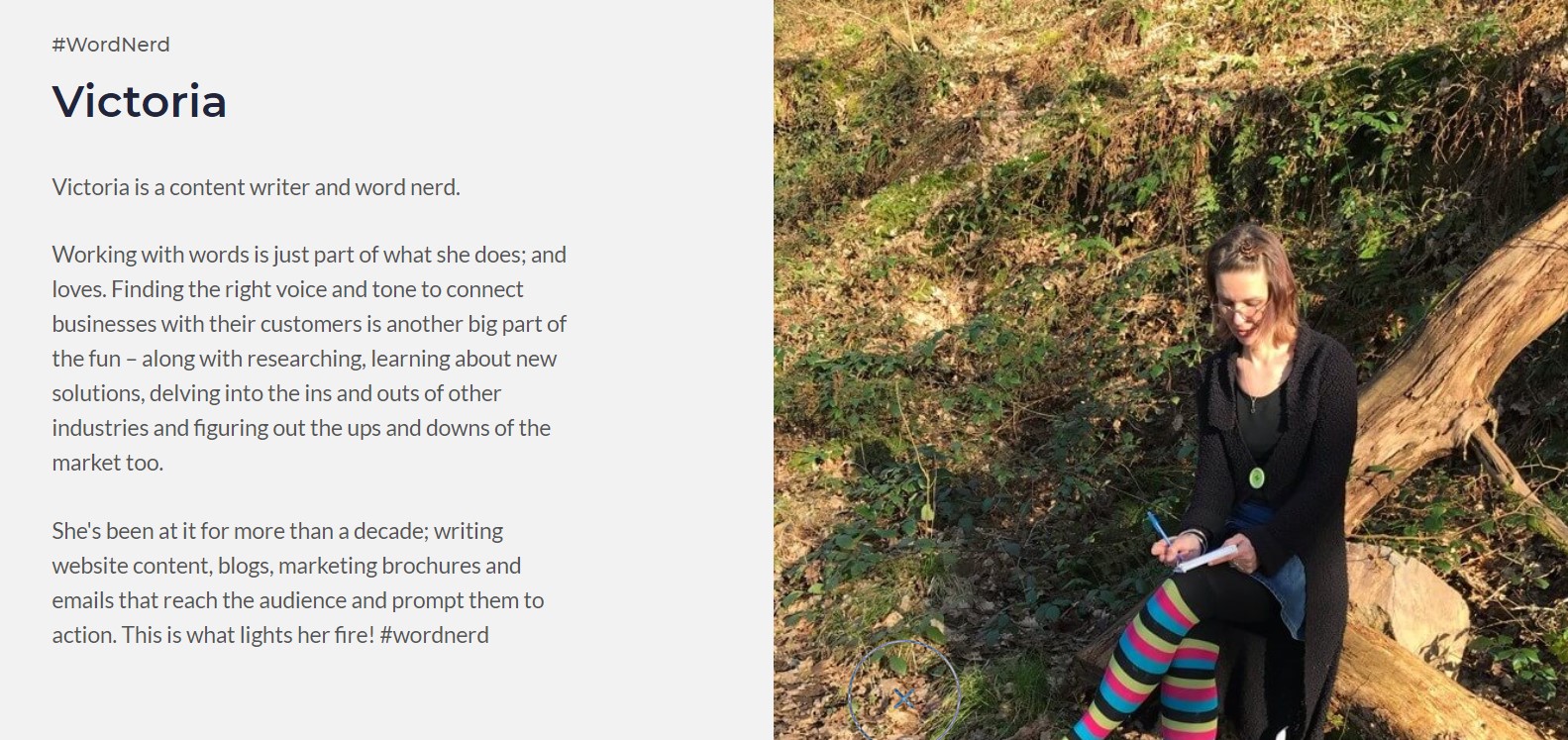That little bit of blurb after your by-line can mean so much. If you’re anything like me, writing is a joy. But writing about yourself is a little painful. Where do you start with an author’s bio? What do you say? How do you make sure you don’t bore the reader – or sound like a total twit?
Researching and writing are some of the things I love most. I’m not bad at it either, it’s a skill that’s supported me and my family for the past decade or so. Whether or not I get credited for my work doesn’t bother me too much. Learning, writing, and getting my words published and paid for is the main goal.
However, when I’m accepted as a writer who is noted as the author of the articles published, it’s still a buzz. Then the inevitable request for a short bio comes in and I’m thrown into a bit of a tizz. Writing SEO-optimized articles is easy compared to writing about myself. Getting my world reduced down into a succinct, fun and memorable 100 words isn’t easy, but I’ve come to learn a few tricks. I’ve noted them for you below.
Consider Your Audience First
As with most writing, you need to think about the people it’s intended for first and make it relatable for them. Sure, a bio is about you, but it’s also about them – the people you write for. Think about the kind of writing you are doing under this particular author’s bio. What topics are you covering? What kind of demographic is reading the pieces you write?
An author’s bio for a tech publication is going to be different from a health publication and different again for an accessories blog or a marketing website. Your bio should connect with the audience as surely as the articles you write. Draw on your experience in the particular subject area you are using the bio for and make sure your tone is in keeping with that.
Use Your Words Wisely
Your writer’s bio is likely to be short. When I say sort, I mean anywhere between 50 words to 250 words. Usually the former. Longer bios go with longer works, like books and manuals. For online blog writing, you’re more likely to be limited to 50 words or 100 at the absolute max.
That means you need to select your words carefully. Each one has to work hard at getting your ‘Who I Am’ message across to the person who takes the time to read your work. You want to be friendly, yet professional. Knowledgeable, but approachable. Interesting and personable.
You need to write about yourself in the third person. In some ways, this can make writing your writer bio easier. Think about your skills from outside of yourself, as though looking at someone else.
The other thing your carefully selected words need to do is sell your skills. Your author bio lets the reader know a little more about you and can also attract more work from similar publications. Don’t be afraid to use words like expert, professional, accomplished or talented.
A Three-line Author’s Bio Formula
For short and sweet bios, I use a simple three-line formula. Each line addresses a different aspect of what I do, all combining to sell myself as a professional writer in the topics I’m getting a by-line for.
Here’s my bio for the Health Times that I began writing with late last year:

- Line one covers the publication and my writing experience.
- The second line connects my writing experience with the topics I cover and why I write about them.
- In the third line, you get a little piece of me to create a whole person picture – after all, I don’t spend every second of my existence writing.
In the example above, my social media contacts are included as icons. Depending on the website or publication you are writing for this may or may not be possible. There are bio’s I’ve written that have included a link to the About Vic page of my website, my email address, Facebook page or some other way of getting in touch.
The point is, including your contact details in some way is a must, unless the publisher has a policy against it. Your bio has multiple talents and one of them is to work as a very brief sales pitch for you.
Longer Team Writer’s Bios
Another kind of bio you might come across as a content writer is the kind that appears on a client’s business website. It’s likely that you’ll have a little more than 50 words. You may even get 250. However many it is, the words you choose need to work just as hard for you as the ones you choose for a short author’s bio.
Having more words to play with doesn’t necessarily make it easier. About Us page bios can be used to build and confirm your brand and image as a writer. Think about your USP – what makes you the unique writer that you are? How do you stand out from the thousands of other writers out there who are also tapping their keyboards every day?
Figuring out that thing is the first part, packaging it up into a neat couple of short paragraphs is next.
With team bios, I pretend I’m writing about someone else. That someone else is likeable and admirable for their skills and the way they use them. They’re the kind of person I’d like to befriend.
Here’s a team bio I wrote for a Canadian business I work with.

I had to come up with a job title first off. Instead of going with my usual and, I’ll admit, fairly boring Freelance Writer title, they wanted something with a bit of pizazz. The kind of thing that would fit with the rest of the super-talented team. So I chose Word Nerd, because, who doesn’t like a rhyme?
The further detail bit reiterates the intro on my About Vic website page. This explains a little more about what I do with words because some people think that writing is just typing whatever words come into your head. But, as you know, there’s more involved with it than that. Explaining what you do clearly is another way of showing you’re good at it.
Team bios generally have an element of how much the person loves doing whatever it is that they do. This helps the reader believe that person is good at what they do too. I genuinely do love writing, so it’s not hard to go on about it. It is hard to rein myself in and not ramble on about how great words are.
There needs to be a personal element in team bios too. Keep this brief and if you can use humour, do. Humour is a great connector for bios.
It’s unlikely that you’ll have a link to contact details with team bios. You might be able to have a LinkedIn connection and if so, you should use this. Again, even if your bio is part of a business’ about us page, it’s an opportunity to sell your skills and what you do.
Choosing an Image for Your Author’s Bio
Headshots for authors’ bios are the usual fare. If you don’t have any professional shots, use something with a reasonably plain background. Blue skies work well. Don’t use images with other people in them. If you have no choice, crop all other people out.
Photos with you looking into the camera work better. This is because the viewer of the image gets the impression you’re looking at them. This creates a feeling of connection even though we all know that bio photos can’t possibly see us.
Once you have written you’re author’s bio, keep it. You’ll be able to pull it out for future projects where you get credited for your words and adapt it for that new market. Avoid using exactly the same bio over and over everywhere. It’s unlikely that new publications will have exactly the same audience as the ones you’re already writing for.
Remember, an author’s bio is as much about the audience as it is about you. Your writer’s bio should sell your skills and make a connection with your reader. Always include some form of contact details when you’re able to. Make every word in your bio work hard to promote you and your work.


Recent Comments